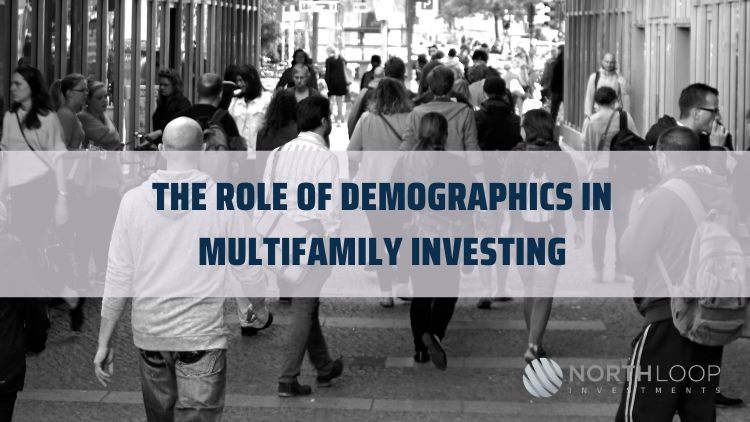Demographics play a vital role in various aspects of our lives, including the real estate market. When it comes to multifamily investing, understanding the dynamics of demographics is crucial for making informed investment decisions. This article explores the significant impact of demographics on multifamily investing and provides insights into why renting is often a better choice than owning a house based on comparative studies and research on American demographics.
Demographic Shifts and Housing Preferences
Demographic shifts, such as changes in age groups, income levels, and household compositions, have a profound influence on housing preferences and demand. The younger generations, primarily millennials and Gen Z individuals, are at the forefront of reshaping the housing landscape. They exhibit distinct preferences and behaviors that significantly impact the multifamily real estate market.
The Rise of the Millennial Generation
Millennials, born between 1981 and 1996, represent a significant portion of the population and have distinct preferences when it comes to housing. According to research, millennials are more likely to delay homeownership compared to previous generations. Factors such as financial constraints, changing lifestyles, and a desire for flexibility have contributed to this shift.
Changing Family Structures
Another critical demographic factor influencing multifamily investing is the changing family structures. Traditional family units have evolved, with an increase in single-person households, cohabitation, and non-traditional family arrangements. These shifts in household compositions impact the demand for housing and drive the need for rental options that cater to diverse living situations.
Comparative Study: Renting vs. Owning a House
To understand why renting is often considered a better choice than owning a house, let’s delve into a comparative study that highlights the advantages of renting based on American demographics.
Financial Flexibility
One of the key benefits of renting is the financial flexibility it offers. Many young Americans face financial constraints that make it challenging to save for a substantial down payment or afford the additional costs associated with homeownership. Renting allows individuals to allocate their funds towards other financial priorities, such as education, investments, or starting a business.
Maintenance and Repair Responsibilities
Owning a house comes with the responsibility of maintenance and repairs, which can be time-consuming and costly. Renters, on the other hand, can enjoy the benefits of having a landlord or property management company handle maintenance tasks, freeing up time and resources for other activities.
Mobility and Flexibility
In today’s fast-paced world, mobility and flexibility are highly valued. Renting provides the freedom to relocate easily without the burden of selling a property. This flexibility aligns with the preferences of millennials and Gen Z individuals, who prioritize career growth, travel, and exploration. By renting, they can adapt to changing circumstances and seize new opportunities without being tied down to a specific location.
Access to Desirable Locations and Amenities
Rental properties, especially in the multifamily sector, often offer convenient locations and desirable amenities that cater to the needs of young Americans. Many rental communities provide access to fitness centers, swimming pools, communal spaces, and other modern amenities that enhance the overall quality of life. Additionally, renting allows individuals to live in vibrant urban areas that may be financially out of reach for homebuyers.
Leveraging Demographics for Multifamily Investing
Understanding the power of demographics can be a game-changer for multifamily investors. By analyzing demographic trends and preferences, investors can identify lucrative opportunities and tailor their investment strategies accordingly.
Targeting Emerging Markets
Demographic shifts often create emerging markets with untapped potential. For example, as millennials and Gen Z individuals continue to delay homeownership, the demand for rental properties remains strong. Investors can capitalize on this trend by targeting markets where these demographics are prevalent and investing in multifamily properties that cater to their needs.
Adapting to Changing Needs
Demographics also provide insights into evolving needs and preferences. By staying informed about the changing demographics, investors can adapt their properties and amenities to align with the demands of the target market. This adaptability ensures long-term tenant satisfaction, reduced vacancies, and higher rental income.
Building a Diversified Portfolio
Multifamily investing allows investors to build a diversified portfolio by spreading the risk across multiple units and tenants. Demographic insights can help in selecting properties in diverse locations and catering to different demographic segments. This diversification mitigates the impact of local market fluctuations and vacancies, providing a more stable and resilient investment portfolio.
Conclusion
Demographics play a pivotal role in multifamily investing. Understanding the shifting preferences and needs of different demographic segments, particularly millennials and Gen Z individuals, can help investors make informed decisions and capitalize on emerging market opportunities. Additionally, the comparative advantages of renting over owning a house, such as financial flexibility, maintenance-free living, mobility, and access to desirable locations and amenities, make multifamily investing a sensible choice in the evolving real estate landscape.








